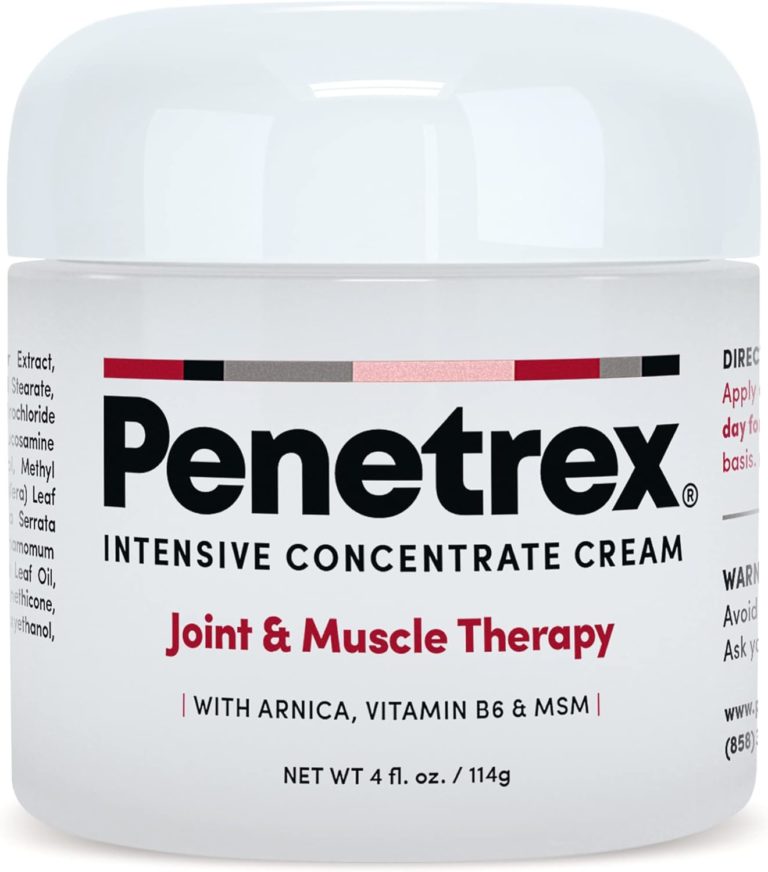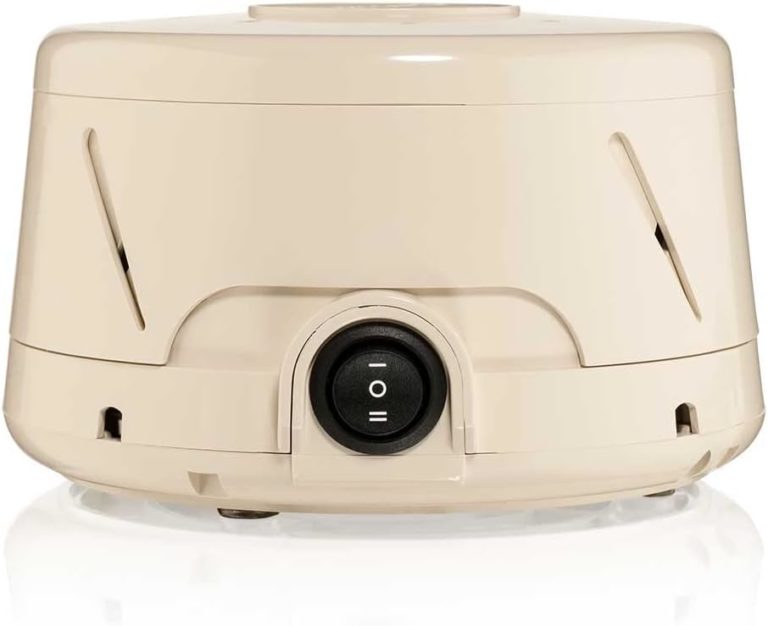As an Amazon Associate I earn from qualifying purchases.
Tips On Overcoming Excessive Sweating
Sweating is a natural bodily process, but when it becomes excessive and uncontrollable, it can cause extreme discomfort and embarrassment. Excessive sweating, or hyperhidrosis, is not only embarrassing but can also have serious social and emotional consequences. Fortunately, there are treatments that can help people with this condition cope with their symptoms and take back control of their lives. In this article, we’ll discuss the causes of excessive sweating, the impacts it has on sufferers’ lives, and the treatments available to help them regain confidence.

For many people living with hyperhidrosis, even the most basic daily activities can be overwhelming tasks. From shaking hands in a professional setting to going out in public without worrying about sweat stains on clothes – these seemingly ordinary things become major sources of stress for those affected. They may also find themselves withdrawing from social situations due to feelings of shame or embarrassment.
The good news is that there are treatments available to help alleviate the symptoms of excessive sweating and restore one’s quality of life. Various medical options exist that can reduce sweat production or stop it altogether. We’ll explore these treatments in more detail later in this article – but first let’s look at what causes hyperhidrosis and how it affects those who suffer from it.
Definition Of Hyperhidrosis
Hyperhidrosis is a medical condition characterized by excessive sweating. It’s estimated that 2-3% of the population suffers from this disorder, which impacts both men and women of all ages. People with hyperhidrosis experience perspiration beyond what’s necessary to regulate body temperature. Sweating can occur in any area of the body, but is most commonly found on the hands, feet, underarms, and face.
The cause of hyperhidrosis is unknown; however, it may be an inherited trait or caused by an underlying medical condition. Treatment for this disorder includes medications such as anticholinergics, botox injections, and iontophoresis—which uses electrical currents to reduce sweating. Surgery may also be recommended in more extreme cases.
Living with hyperhidrosis can have a huge impact on someone’s life, causing social anxiety and embarrassment due to sweat marks seeping through clothing or appearing on public surfaces like keyboards or phones. It’s important to talk to your doctor if you think you might have this condition so that they can provide you with the right treatment plan for your individual needs.
Common Causes
Excessive sweating, or hyperhidrosis, is a condition that can have many underlying causes. Some of the most common are related to genetics and environment.
Genetic factors can influence how much a person sweats. It is possible to inherit the tendency to sweat more than normal from family members. In some cases, it can be caused by an overactive thyroid or other medical conditions such as diabetes or menopause.
Environmental factors can play a role in excessive sweating too. Hot weather or humid climates may cause people to perspire more than normal. Wearing certain materials like polyester or wool can also make someone sweat more than usual. Additionally, certain medications, including antidepressants and beta blockers, are known to increase perspiration levels in some people.
Though the exact cause of excessive sweating varies from person to person, understanding what triggers it is the first step in finding a solution that works best for you.
Diagnosis Process
The first step in overcoming excessive sweating is to determine the underlying cause of the condition. This involves a physical exam and work-up by a healthcare professional, such as a doctor or dermatologist. During the physical exam, the doctor will look for any signs of infection or underlying medical issues that may be causing the sweating. The doctor may also ask questions about lifestyle habits, such as diet or exercise routine, to help identify potential causes.
In addition to the physical exam, diagnostic tests may be ordered to further evaluate the cause of excessive sweating. These tests can include blood tests to check for certain hormones or infections, and sweat tests that measure how much sweat is produced when exposed to certain stimuli. Imaging scans, such as an ultrasound or MRI scan, may also be necessary if there are any concerns about underlying medical conditions.
Once the underlying cause has been identified and proper treatment has been initiated, it is possible to start controlling excessive sweating through lifestyle changes and medications. Medications can range from topical creams and antiperspirants to prescription medications that target specific causes of sweating. Lifestyle modifications such as avoiding triggers like spicy foods and caffeine can also help reduce excessive sweating episodes.
Natural Home Remedies
Natural home remedies are a great way to combat excessive sweating. Many of these remedies are inexpensive and easy to find, making them a popular choice among those looking for quick relief. Some of the most common natural home remedies include drinking plenty of water, applying baking soda to the affected area, and using witch hazel.
Drinking lots of water can help reduce sweating by keeping your body hydrated. Drinking at least 8 glasses per day is recommended for best results, though you may need more depending on your individual needs. Additionally, adding electrolytes such as salt or potassium to your diet can help keep your body well-hydrated.
Another popular remedy is applying baking soda to the affected areas. Baking soda has natural antiperspirant properties that can help reduce sweat and odor. Simply mix one teaspoon of baking soda with enough water to form a paste, apply it directly onto the skin, and allow it to dry before washing off with warm water.
Witch hazel is another effective natural remedy that can be used topically on the skin. It has astringent properties which can help close pores and reduce excessive sweating in the area applied. Simply soak a cotton ball in witch hazel and apply it directly onto the skin; repeat this process up to four times each day for best results.
These natural home remedies are safe, effective ways to manage excessive sweating without resorting to more drastic measures such as surgery or prescription medications. While they may not provide immediate relief, they can be used alongside other treatments such as lifestyle changes or over-the-counter products for increased effectiveness when dealing with excessive sweat and odour issues.
Over-The-Counter Treatments
Many people suffering from excessive sweating have found relief with over-the-counter treatments. The most widely available and affordable treatment is antiperspirant. While this won’t stop the sweating completely, it can help minimize it by blocking sweat ducts with an aluminum-based compound. It’s important to apply antiperspirant at night, as that is when sweat glands are most active.
Another over-the-counter treatment option is a topical cream or lotion containing aluminum chloride hexahydrate. This helps to reduce sweating by temporarily clogging the sweat glands in order to reduce the flow of sweat onto the skin’s surface. These products are generally applied daily after showering or bathing and before bedtime, and need to be reapplied regularly for best results.
For those who don’t find relief with antiperspirants or topical creams, there are a variety of other products available that target excessive sweating specifically. These include wipes, patches, roll-on solutions and sprays that contain natural ingredients such as aloe vera and witch hazel which work to reduce perspiration without using harsh chemicals. There are also alternative treatments such as acupuncture and aromatherapy that may provide some relief from excessive sweating. Whichever method you choose, it’s important to remember that finding the right solution may take time and patience.
Prescription Medications
If over-the-counter treatments are not effective, it may be necessary to consider medications prescribed by a doctor. Commonly used prescription medications for excessive sweating include anticholinergics and botulinum toxin injections. Both of these treatments have their own advantages and disadvantages.
Anticholinergics work by blocking the action of the neurotransmitter acetylcholine, which is responsible for triggering sweat gland activity. These medications provide relief from sweating in many cases but can cause side effects such as dry mouth, constipation and blurred vision. They also take several weeks to take effect and must be taken regularly in order to maintain their effectiveness.
Botulinum toxin injections are another option for treating excessive sweating. These injections block the transmission of nerve signals to the sweat glands, preventing them from producing sweat. Injections are typically given every three months and last up to two years before they need to be repeated. While they provide long-term relief from sweating, they can cause some discomfort during the injection process and may not be suitable for all people.
Prescription medications can offer an effective solution for those who suffer from excessive sweating, but it is important to discuss all treatment options with a doctor before deciding which one is best suited for an individual’s needs.
Surgical Procedures
For those who are unable to manage their excessive sweating with lifestyle changes and over-the-counter treatments, a surgical procedure may be an option. Two common types of surgery used to treat hyperhidrosis are thoracic sympathectomy and endoscopic thoracic sympathectomy (ETS).
Thoracic sympathectomy is an open surgical procedure that involves cutting or tying off the nerves responsible for heavy sweating. The surgery is usually performed in a hospital setting under general anesthesia. It’s important to note that thoracic sympathectomy can cause compensatory sweating, which is a condition where sweat production increases in areas not previously affected by hyperhidrosis.
Endoscopic thoracic sympathectomy is a minimally invasive surgical procedure that uses an endoscope to deliver energy to the nerve responsible for excessive sweating without having to make any incisions on the skin’s surface. This procedure also carries the risk of compensatory sweating, but some studies suggest it may be less likely than with thoracic sympathectomy. Additionally, ETS typically has fewer side effects and offers quicker recovery times compared to the open surgery option.
Both types of surgery carry risks such as infection, nerve damage, and lung complications; therefore they should only be considered after other treatments have failed or if symptoms are severe enough to interfere with everyday life activities. Patients should discuss their individual situation with their doctor before making any decisions about treatment options.
Botox Injections
Botox injections are often used to reduce excessive sweating. This procedure involves injecting a small amount of Botulinum toxin type A into the affected areas. The toxin blocks the signals from the nerves to the sweat glands, thus reducing or stopping the production of sweat in that area. It typically takes two to four weeks for this treatment to take full effect, and the results usually last between four and six months.
The procedure itself is relatively painless and non-invasive, however there are some side effects associated with it. These include redness, swelling, bruising, itching, burning sensation and headache at the injection site. In rare cases, there may be an allergic reaction or other serious adverse effects such as difficulty breathing or swallowing. As with any medical procedure, it is important to consult a qualified medical provider before undergoing Botox injections for excessive sweating.
Although some people may experience temporary discomfort associated with Botox injections for excessive sweating, they can provide significant relief from this condition over time if done correctly. Additionally, the results can last several months before needing to be repeated again. For many people who suffer from excessive sweating due to hyperhidrosis, Botox injections offer an effective solution with minimal risk and long lasting results.
Changing Your Lifestyle Habits
However, Botox injections are not the only way to overcome excessive sweating. Changing your lifestyle habits can also be a great way to reduce sweating. To start, it’s important to stick to a healthy diet and exercise routine. Eating nutrient-rich foods and staying active can help regulate body temperature, which may lead to less sweating. Additionally, drinking plenty of water and avoiding sugary drinks can help keep your body cool.
It’s also important to avoid triggers that could cause excessive sweating. For instance, wearing loose-fitting clothes in hot weather or taking breaks from physical activities can help minimize sweat production. Additionally, certain medications may increase sweating so it’s important to talk with your doctor about any possible side effects before taking them.
Finally, stress management is key for reducing excessive perspiration in some cases. Taking deep breaths when feeling anxious and practicing mindfulness activities such as yoga or meditation can help relax the body and lower sweat production. It’s also beneficial to find ways to cope with everyday stresses without relying on unhealthy habits such as smoking or drinking alcohol. With a combination of these strategies, you can take control of your excessive sweating and feel more confident in your own skin.
Coping With Emotional Stress
Coping with emotional stress can be difficult, but it is possible. The first step is to acknowledge your feelings and identify their source. Once you have identified the source of your stress, it’s important to take steps to reduce it. This could mean seeking help from a therapist or talking to friends or family about what you’re feeling. It may also involve self-care activities such as exercise, meditation, writing in a journal, or taking a hot bath.
The next step is to create an action plan for managing your emotions in the future. This might include setting boundaries with people who are causing you stress, creating a daily routine that helps you stay focused and organized, or even just taking time out of your day for yourself. Finally, it’s important to remember that no one is perfect and that it’s okay to make mistakes along the way. You can learn from them and move forward in a positive way.
It’s not always easy to manage emotions on our own but doing so can lead to improved mental health and well-being in the long run. Find ways that work best for you and practice them regularly until they become part of your lifestyle. With patience and effort, you’ll soon see an improvement in how you cope with emotional stress.
Frequently Asked Questions
What Activities Should I Avoid If I Have Hyperhidrosis?
If you have hyperhidrosis, there are certain activities that you should avoid. Hyperhidrosis is a medical condition in which a person sweats much more than usual and can’t control it. Sweating excessively can be embarrassing and make it difficult to do everyday tasks. It’s important to understand what activities may trigger or worsen your excessive sweating so that you can avoid them.
First, it’s best to stay away from any heavy physical activity if you have hyperhidrosis. This includes sports like running, weightlifting, basketball or any other form of exercise that requires you to put in a lot of effort or move around a lot. Even light activity such as walking or jogging can exacerbate your symptoms, so it’s best to keep physical activity at a minimum when dealing with excessive sweating.
Besides physical activity, there are also certain environments and conditions that could trigger your hyperhidrosis symptoms. Hot weather can cause sweating, so try to limit your exposure to direct sunlight and heat during the summer months. Tight clothing made of synthetic fabrics can also make you sweat more, so try wearing loose-fitting natural fabrics like cotton instead. Stressful situations and caffeine consumption can also worsen symptoms of hyperhidrosis, so try to minimize these triggers as well whenever possible.
Taking small steps like avoiding physical activity and controlling the environment around you can help manage the symptoms of hyperhidrosis and help reduce excessive sweating over time. With the right precautions in place, you may find some relief from this condition and be able to go about living life without the burden of excessive sweating taking over your day-to-day activities.
Are There Any Long-Term Side Effects Of Using Prescription Medications For Hyperhidrosis?
When it comes to treating excessive sweating, or hyperhidrosis, prescription medications may offer a solution. However, it is important to consider the potential long-term side effects of these medications before beginning treatment. In this article, we will explore what types of side effects can come with using prescription medications for hyperhidrosis and how to manage them.
The most common type of medication used to treat excessive sweating is anticholinergics. These drugs work by blocking the nerve signals that cause overactive sweat glands. While they can provide relief from symptoms in the short term, there are some potential long-term side effects associated with their use. Common side effects include dry mouth, dry eyes, constipation, and dizziness. Additionally, some people may experience blurred vision or changes in heart rate as a result of taking these medications.
In terms of managing these side effects, it is important to speak with your doctor about any issues you may be experiencing while on the medication. Your doctor may be able to adjust your dosage or switch you to a different type of drug that has fewer side effects. Additionally, there are lifestyle changes you can make that can help reduce the severity of some of these side effects. For example, drinking plenty of water throughout the day can help reduce dry mouth and eyes while avoiding alcohol and caffeine can help manage dizziness and blurred vision.
It is also important to remember that while prescription medications may offer relief from symptoms in the short term, they should not be used as a long-term solution for managing hyperhidrosis without consulting your doctor first. With proper guidance and management strategies in place, however, you should be able to successfully use these medications without experiencing significant long-term side effects.
How Much Does A Surgical Procedure For Hyperhidrosis Cost?
Surgical procedures for hyperhidrosis can be a costly endeavor, so it’s important to know what you’re getting into financially before making any decisions. This article will look at the cost of different surgical treatments for those who suffer from this condition.
The cost of a surgical procedure for hyperhidrosis will vary based on the type of surgery you choose and the location of your doctor. Some common operations are endoscopic thoracic sympathectomy (ETS), radiofrequency ablation (RFA), and endoscopic lumbar sympathectomy (ELS). The average cost of ETS is between $3,000 – $6,000 depending on where you live and how much is covered by insurance. RFA may cost around $2,000 while ELS can range from $8,000 – $10,000.
It’s important to note that the prices listed above are just estimates. In addition to these costs, some people may also need additional treatments such as physical therapy or medication if they experience side effects from their procedure. Your doctor can provide more accurate pricing information based on your individual needs and situation.
No matter what treatment route you choose for your excessive sweating, it’s important to do your research and consider all options carefully before making a decision. Talk to your doctor about the risks and benefits associated with each option so that you can make an informed choice that works best for you.
Are There Any Natural Alternatives To Botox Injections For Hyperhidrosis?
Many people suffer from excessive sweating, and are looking for alternatives to expensive and invasive surgical treatments. Botox injections are commonly used to treat hyperhidrosis, but they can be costly and painful, making many people seek out natural remedies instead. The current H2 question is: Are there any natural alternatives to botox injections for hyperhidrosis?
Fortunately, there are several natural treatments available that can help reduce excessive sweating. One of the most popular methods is iontophoresis, which uses a low-voltage electrical current to block sweat glands. This treatment is safe, non-invasive, and relatively inexpensive when compared with botox. Other natural treatments include dietary changes such as avoiding certain foods or drinks that can trigger sweating; topical creams containing aluminum chloride or glycopyrronium; and herbal supplements like sage or green tea extract.
It’s important to remember that each person is different, so what works for one person may not work for another. It’s also important to consult a doctor before trying any new treatment, as some may have side effects or interact with existing medications. Ultimately, finding the right solution will depend on an individual’s unique situation and needs – but fortunately, there are plenty of natural alternatives available to those who are seeking relief from excessive sweating caused by hyperhidrosis.
What Kind Of Lifestyle Changes Should I Make To Help Reduce Excessive Sweating?
When it comes to reducing excessive sweating, there are many lifestyle changes that can be beneficial. These lifestyle alterations include dietary changes, stress management techniques, and physical activity. Making these changes may help reduce the amount of sweat your body produces, ultimately improving your quality of life.
One of the most important lifestyle changes you can make is to adjust your diet. Consuming foods low in fat and sugar can help reduce the amount of sweat produced by your body. Additionally, drinking plenty of water each day helps keep your body hydrated so it functions optimally and doesn’t overproduce sweat as a result. Eating healthily also helps control weight gain, which can contribute to excessive sweating as well.
Another important lifestyle change for reducing excessive sweating is managing stress levels. Stress increases perspiration as a way for the body to cool itself down when under pressure. For this reason, finding ways to manage stress such as yoga or meditation may help reduce the amount of perspiration produced when feeling stressed out.
Finally, getting regular exercise helps keep your body in shape and regulate its temperature naturally without having to overproduce sweat as a cooling mechanism. Exercise also helps release endorphins which makes you feel better overall and less likely to break into an anxious sweat during stressful situations. Regular exercise also helps control weight gain which can further contribute to excess perspiration production in some people.
By making simple lifestyle changes such as adjusting diet, managing stress levels, and getting regular exercise, you may be able to reduce the amount of sweat produced by your body and improve quality of life overall.
Conclusion
Hyperhidrosis can be a frustrating and embarrassing condition, but it doesn’t have to rule your life. With some lifestyle changes and the right combination of treatments, you can reduce excessive sweating. Avoiding certain activities like intense exercise or spicy foods can help you manage hyperhidrosis more easily. If you decide to pursue a prescription treatment, make sure to discuss any long-term side effects with your healthcare provider before starting. Surgery is an option for more severe cases of hyperhidrosis, though the cost may be prohibitive for some people. Natural alternatives such as herbal teas and deodorants can also help reduce sweating without invasive procedures or medications.
Overall, dealing with hyperhidrosis takes time and patience. The best approach is to work with your doctor to create a tailored plan that works for you. Don’t forget to make lifestyle changes too – they can make a big difference in helping you manage excessive sweating over the long-term. You don’t have to let hyperhidrosis control your life; with the right combination of treatments, you can take back control and reduce the impact of excessive sweating on your everyday life.
Amazon and the Amazon logo are trademarks of Amazon.com, Inc, or its affiliates.












